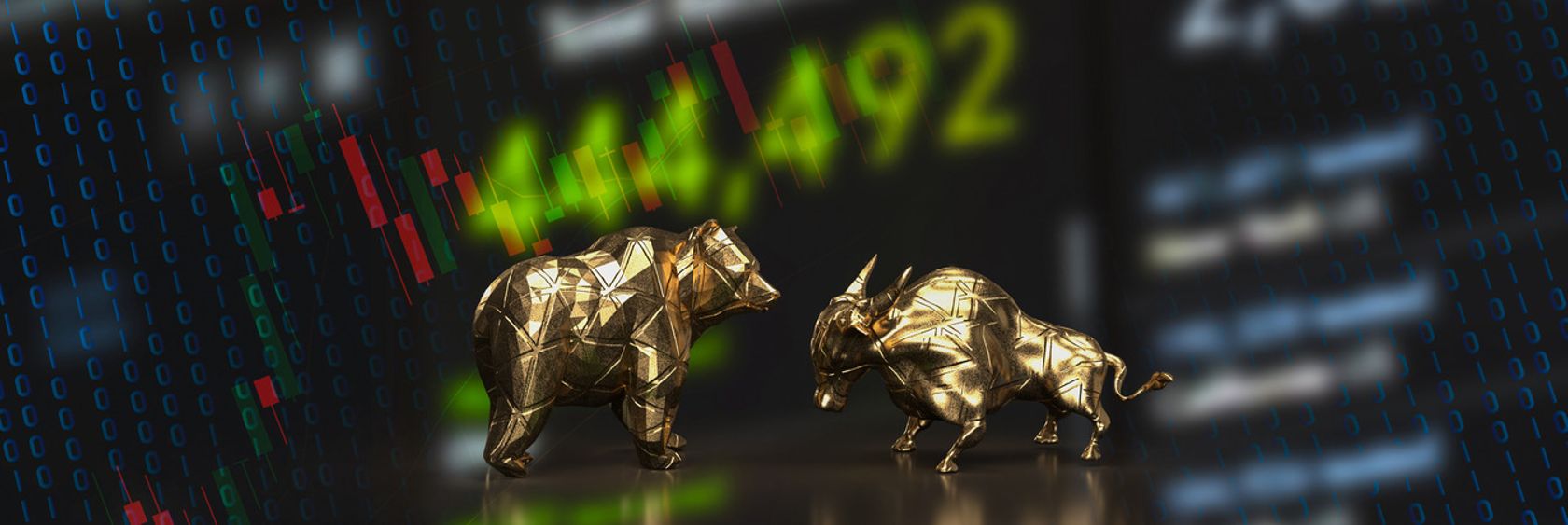
Financial markets catching the wind
During the six-month period, major stock markets globally had double-digit positive returns. Will this trend continue?
Stock exchanges are not losing their way and are sailing with the wind at their backs in these first six months of the year. During the six-month period, major stock markets globally had double-digit positive returns.
In particular, the Eurostoxx 50 and the S&P 500 performed about +15 percent and +13 percent, respectively, in Euro terms. The fact that the world's most important stock index, the S&P 500, has returned to a bullish phase could be dismissed as a technical factor. But even the most cautious observers of this snapshot cannot fail to recognize a definite recovery in stock prices: the index has recovered 20 percent from its October lows, which means it has entered a new bull market.
Financial Markets rally
In more detail, the rally that has occurred, with some exceptions, globally is due to the prospect that the major central banks may be nearing the end of their restrictive monetary policy cycle and thanks to gross domestic product growth, which although declining in both the United States and the Eurozone has proven to be higher than analysts' expectations.
The Nasdaq index has had the best returns since the beginning of the year with a performance close to 32 percent in euros while the S&P 500 index is now more than 20 percent above the October 2022 low.
However, it should be noted that most of the gains were driven by three sectors: information technology, communications, and consumer discretionary, and within these, only a few stocks. In fact, seven stocks have contributed to the 10 percent rise in the S&P 500 this year: Nvidia, Tesla, Google (Alphabet), Microsoft, Apple, Amazon, and Meta. In particular, Nvidia, a company particularly involved in artificial intelligence, doubled its second-quarter sales estimates to $11 billion. This figure represents about half of last year's total sales.
Europe
The stock market in Europe also posted positive returns of about +13%. Again technology-related stocks such as ASML (+27%) but also banking stocks such as Unicredit (+52%) stood out. Specifically, the European banking sector posted record profits benefiting from the higher rate environment on its "Net Interest Margin."
Suffering since the beginning of the year in both the United States and Europe have been stocks related to the "utilities" and energy sectors due to the retracement of the latter's prices. Looking at Piazza Affari, the best stocks in the six-month period were precisely Unicredit +52.99%, Ferrari +43.92% and Bper Banca +42.66%, while the worst were Tenaris (-21.68%), Finecobank (-22.23%) and Diasorin (-25.63%).
World stock exchanges
Geographically underperforming in the first half of the year was the Chinese stock market with negative returns in the range of about -6 percent in euro terms. Weighing on the second global powerhouse were downward revisions in gross domestic product growth that were not followed by an adequate response from the Beijing government in terms of stimulating the economy.
Surprise: Argentina with about +42% in Euro is in the first six months of the year the best market in the world, while Italy is the best list within the Emea cluster. In the global chessboard, Brazil stands out with +18.41% (again in Euro over the period), which despite its excellent performance failed to beat the Nasdaq: it is therefore on the podium as the best market as a country but not as an index.
Also in the spotlight was Japan, which has had returns in the order of 14 percent in euros since the beginning of the year similar therefore to those posted by Piazza Affari.
Also noteworthy are the performances of Taiwan +19% and Poland +23%. Among emerging countries, China ranks among the worst stock exchanges in the world along with South Africa, while among developed countries one of the worst is Australia, which has put up -2.35% in euros since the beginning of the year.
Outlook
"As far as the stock market is concerned, of key importance will be the upcoming earnings review where the ability of companies to maintain higher-than-expected earnings will be tested in an environment where consumption may begin to be impacted by restrictive central bank policy. Inflation and growth will be the issues on which the market will focus in the coming months," comments Andrea Mongardini, portfolio manager at Banca Generali.
"For example, we note how U.S. inflation has fallen below 5 percent twice in a row within two years of the last time. We therefore believe that a balanced approach between the 'growth' and 'value' segments may be appropriate to navigate such a scenario. Finally, after the underperformance since the beginning of the year, we look with interest at the Chinese market, which now has valuations below the historical average bearing in mind the high volatility that characterizes the Asian market. Our asset management schemes offer a range capable of responding to clients' needs in a market environment that is so difficult to read and interpret."
Bonds
On the bond front, the Federal Reserve from March 2022 raised interest rates by 500bps bringing the cost of money to 5.25 percent. Similarly, the ECB also raised benchmark rates by 400bps. Both have made it a priority to control the inflationary spiral that started first with Covid and then exploded with the war in Ukraine. Against this backdrop, yields on the 2- and 10-year Treasury peaked at about 5 percent and 4.20 percent, respectively, while those on the corresponding German government bonds peaked at about 3.33 percent and 2.70 percent.
As far as Eurozone spreads are concerned, there has been a contraction, leading in particular to a narrowing of the yield spread between BTP and Bund to an area around 155 bps. The good performance of the BTP can be attributed among other things to the confirmations of Italy's rating being reviewed by the major rating agencies. On the credit side, stable spreads are observed on the Investment Grade segment and contracting on the High Yield with yield levels in Europe at 5% and 8%, respectively. It should also be noted that since the beginning of the year the main European bond benchmark has risen about 2.80 percent.
Currencies
At the currency level, after the strong appreciation of the dollar last year, there was a phase of volatility on the exchange rate that led the euro after the first six months of the year to appreciate against the U.S. currency in the range of about 2.5 percent. "This is because of the different monetary policy outlook of the central banks with the Fed as anticipated by traders coming before the ECB to a pause in raising rates. Weakening yen due to the static monetary policy of the Japanese central bank," Mongardini concludes.


